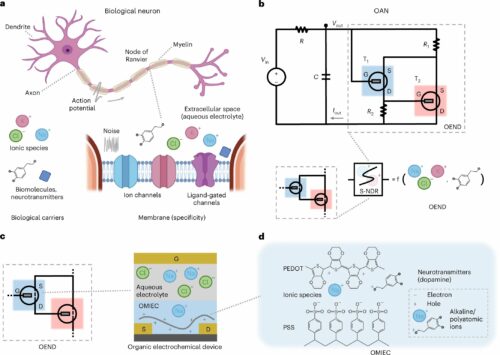Scientists have developed the first bio-realistic artificial neuron that could efficiently communicate with their “real” biological counterparts

Artificial neurons must take into account both their biological counterparts and the wet biological environment, which is made up of ions, biomolecules, and neurotransmitters, to effectively communicate between biology and electronics. As a result, researchers at the Max Planck Institute for Polymer Research, led by Paschalis Gkoupidenis, have created ‘real’ artificial neurons capable of processing various biological signals. This neuron can function in a biological setting and can generate a variety of spiking dynamics that are present in biology. As a result, they can communicate with their “true” biological counterparts.
For this purpose, the group of Gkoupidenis realized a non-linear element made of soft organic matter, something that also exists in biological neurons. “Such [an] artificial element could be the key to bio-realistic neuroprosthetics that will speak the same language as biology, enabling the efficient restoration, replacement, or even augmentation of the functions of the nervous system,” says Gkoupidenis.
As a result, the scientists were able to create an artificial neuron that behaves realistically and is capable of communicating in biological environments in a variety of ways, including chemically or via ionic charge carriers.
Click here for the Published Research Paper






